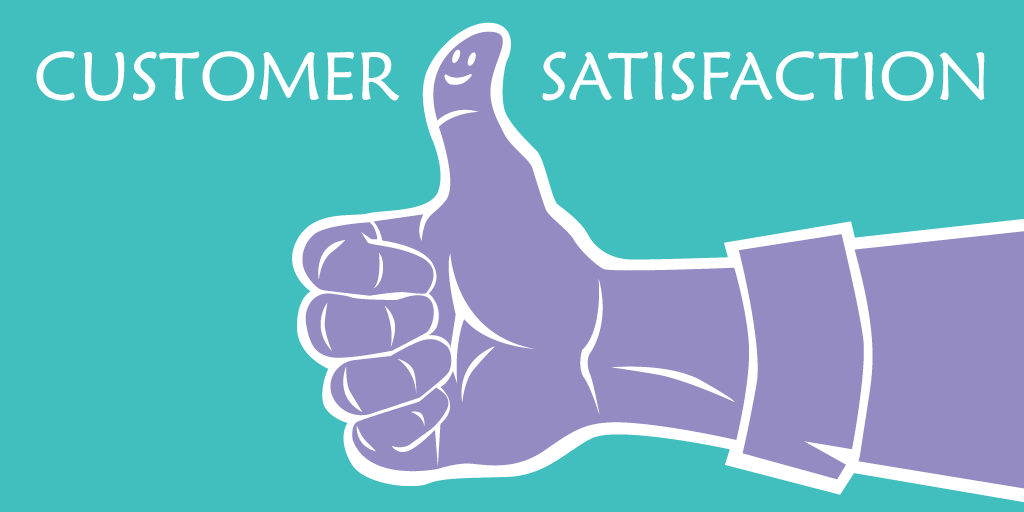Missed appointments are a headache for any industry, but the real burden often falls on the staff.
When someone misses their appointment - whether it’s because they overslept, got delayed, or simply forgot - the impact ripples beyond just that one slot. Staff members are left scrambling to adjust schedules, manage waiting clients, and salvage the day’s workflow.
Unfortunately, no-shows don’t just disrupt the day; they create stress, waste valuable time, and can undermine the overall efficiency of the team.
As with most things in life, but especially with no-shows, less is more.
In this article, we will discuss the best strategies to reduce no-shows in retail, primary care, and other industries.
What is a no show?
A “no-show” happens when a person fails to appear for a scheduled appointment, reservation, or event without prior notice or cancellation.
First things first, let’s make one thing clear: no business can boast a 0% rate of no-shows — not consistently, anyway.
This is, sadly, especially true of hospitals. In the United States, the patient no-show rate can be up to 33%.
According to the recent Clinic to Cloud 2020 Survey: Building a Better Practice Beyond COVID-19, 71% of medical professionals have seen an increase in patient anxiety or distress, and 50% saw an increase in patient appointment confusion and no-shows since the pandemic began.
If you don’t know the no-show rate of your business, you can calculate it right away.
How to calculate your no-show rate
To calculate your business’ no-show rate, divide the number of no-shows by the total number of appointments.
For example, if there were 100 appointments in a day, and 10 visitors did not show up, your no-show rate is 10 / 100 = 0.1, or 10%.
Calculating your no-show percentage gives you a nice starting point from which you can begin improving your business’ visitor show rates.
Why reduce no-shows: the problem with balking visitors
The main negative consequences of no-shows are two-fold. These are:
Direct financial costs — lost revenue and unrealized gains.
Operational costs — through creating scheduling inaccuracies and forcing to rebook time slots.
No-shows are a costly phenomenon for hospitals.
Dr. Thornton, a breast cancer surgeon, says that no-shows are one of the most costly things that can happen to a primary care provider, and the increasing admin on the back of appointment no-shows is “simply unsustainable”.
I’m a cancer surgeon, so I’m responsible for all the no-shows. When a patient doesn’t show, I have to write a letter to the patient and their general practitioner, so it costs me time, plus it costs me money I haven’t earned.
For instance, a no-show rate of 12% can cost a vascular laboratory a gross loss of $89,107 annually. It also creates inefficiency in the appointment scheduling system and increases the waiting time for outpatients.
It was also shown that reducing the no-show rate to 5% would result in increasing the revenue by $51,769.00.
These issues magnify when scaled up. 67,000 instances of no-show patients can set back the healthcare system around $7 million.
Suffice to say that at an average cost of $265 per missed appointment, every appointment counts.
How to reduce no-show appointments
No-shows can disrupt schedules and waste valuable resources, but many are preventable with the right approach.
By addressing common challenges and taking proactive steps, you can improve attendance, enhance patient experience, and keep your schedule on track.
Send a warm-up message to the visitor
Reduce the time between scheduling an appointment and the actual appointment
Allow for self-service scheduling
Set up automatic SMS reminders
Implement flexible rescheduling, cancellation and rebooking policies
Keep track of no-show appointment rates
Follow up on missed appointments
Express gratitude to punctual patients
Minimize wait times
1. Send a warm-up message to the visitor
Lack of urgency leads to a lack of responsibility. Patients may not regard missing their appointment as crucial to their care and to healthcare providers.
To fix this, you should be open with your timetable. Share your agenda with the customer: what should they expect, what the agreed date is, the location, and maybe even something about you as a provider.
(Brevity is the soul of wit, but some people respond better to oversharing.)
In short, a customer needs to know why this appointment is important. As long as you can illustrate the importance, you can minimize the risks of cancellation.
2. Reduce the time between scheduling an appointment and the actual appointment
One of the more effective ways of reducing no-shows? Cut down the waiting times.
Whether it’s reducing no-show rates in primary care or in some other industry, your visitors want faster service.
The longer they have to wait in line, the bigger the likelihood of them leaving it mid-wait.
Try implementing a virtual queuing system that helps get rid of physical lines. Give customers the freedom to wander around and wait wherever they want.
It has been shown that time spent standing in queues feels like passing slower than it actually is. By focusing on the convenience of waiting, you can create a positive experience for your visitors and patients, which leads to a reduced no-show rate.
3. Allow for self-service scheduling
Self-service scheduling allows patients to book and manage their appointments digitally, reducing the workload on staff and improving the overall experience.
This streamlined approach not only improves efficiency but also creates a more customer-friendly process by giving them more control over their appointments.
Research by Marhefka found that appointments scheduled via digital self-scheduling had lower no-show rates compared to those arranged through traditional office-assisted methods.
By implementing self-service check-in, you can:
Free up staff resources by reducing the need for manual scheduling and line management.
Empower customers to take control of their own check-in process, leading to a smoother experience.
Collect valuable customer data, which can help personalize services and improve future interactions.
Self-service check-in kiosks are also a great way of collecting additional customer information that could be used to improve the service.

4. Set up automatic SMS reminders
It has been shown that automatic notifications help reduce no-shows.
Dr. Chantel Thornton, whom we have quoted earlier, explains how the automation of appointment reminders and follow-up reminders has saved her both time and money:
I send out automated reminders to patients to get their mammograms and ultrasounds done. I can send them addresses and referrals directly. I can remind them they have an appointment booked. It saves me masses of time and money.
In Drabkin et al paper “Telephone reminders reduce no-shows: A quality initiative at a breast imaging center”, they managed to reduce the no-shows from 20.99% to 7.07% with the application of phone reminders.
Two-way SMS communication in general is a good way of keeping your patients well-informed and notifying them of any changes or delays that happen.

To supplement the SMS notifications, consider also sending timely email reminders with appointment details, location, and key visit information can improve communication and reduce the chances of missed appointments.
5. Implement flexible rescheduling, cancellation and rebooking policies
When customers or patients feel that it would be too much of a hassle to reschedule, they are likely not to contact you at all.
At best, you’ll miss out on this one interaction. At worst, they will take their business elsewhere.
Make your rescheduling policy more flexible to accommodate for mishaps that force people to come late.
Flexibility is key, but it should come with a clear and defined process. Make it easy for patients to reschedule while ensuring they understand the policy.
In the healthcare industry, many medical practices are addressing missed appointments by introducing no-show fees. According to a January 2025 MGMA Stat poll, 42% of medical group leaders reported their practices implementing a no-show fee, while 58% did not.
Interestingly, practices that charged a no-show fee reported greater improvements in reducing no-show rates compared to those without one.
This highlights how a balanced approach - offering flexibility while maintaining accountability - can drive positive results.
To make your appointment policy effective, set clear guidelines around timing, no-show fees, and expectations. This transparency can prevent confusion and foster trust.
6. Keep track of no-show appointment rates
No matter how hard you’re going to try to reduce no-shows, they are inevitable.
Keep an eye on no-show rates - daily, weekly, or monthly, depending on your business - to make sure they don't get out of hand.
Again, the formula for a no-show rate is the number of no-shows divided by the total number of visitors for the same period.
Benchmarking your no-show rates against industry averages can provide valuable insights into your performance.
For example, healthcare clinics typically experience no-show rates between 10-30%, while financial services and government appointments may have lower rates, often around 5-15%.
If your no-show rate exceeds the industry benchmark, it may be time to reassess your appointment reminders, scheduling flexibility, and communication strategies.
7. Follow up on missed appointments
When a patient misses an appointment, promptly reach out to understand the reason and reschedule. This demonstrates your commitment to their well-being and helps identify any barriers preventing attendance.
There are certain causes for no-shows that you, as a service provider, have little to no control over:
Transportation-related issues
Scheduling conflicts
Weather conditions
Personal/job-related emergencies
Fear and anxiety (especially in primary care)
While these factors may seem out of your hands, there are ways to provide support when the situation is manageable. Offering flexible scheduling options, including same-day or virtual visits, can help accommodate patients dealing with conflicts or weather-related concerns.
According to a study published in the Journal of the American Medical Informatics Association, predictive model-based interventions, such as follow-up calls, can effectively reduce no-show rates. 
By maintaining communication and offering practical solutions where possible, you not only improve attendance but also build stronger relationships with your patients.
8. Express gratitude to punctual patients
Acknowledging and thanking patients who show up on time might seem like a small gesture, but it goes a long way in building strong relationships. Simply greeting the patient and showing appreciation can make a big difference.
For instance, you could say something like, “We really appreciate you arriving on time. It helps us keep things running smoothly and ensures we can give you the best care possible.”
This kind of positive reinforcement creates a sense of mutual respect. Over time, patients are more likely to prioritize their appointments because they feel valued and acknowledged, not just as customers, but as partners in the process.
It’s these little touches that turn one-time visitors into loyal, dependable patients.
9. Minimize wait times
Nobody likes to wait - especially when they’ve made the effort to show up on time. Keeping waiting times short and managing the waiting room effectively can make all the difference in creating a positive experience for both walk-ins and scheduled appointments.
One way to do this is by using a queue management system that organizes and prioritizes visitors based on their appointment status and arrival time.
For example, Qminder can help balance the flow of walk-ins and appointments seamlessly, ensuring no one feels overlooked.

Think about it - when patients walk into a well-organized, calm waiting room where everything runs smoothly, they’re more likely to trust your service and stick to their future appointments.
Plus, a stress-free waiting area means happier staff, which translates to better service for everyone.
Turn no-shows into opportunities with Qminder
No-shows might feel like an inevitable part of doing business, but with the right strategies, they can be minimized.
By fostering clear communication, building trust, and illustrating the importance of showing up, you can make a significant impact on reducing missed appointments.
That’s where Qminder comes in. Our appointment scheduling software is designed to simplify your workflow, keep your team on track, and ensure your customers stay informed and engaged.
From automated reminders to real-time scheduling insights, Qminder helps you manage appointments with ease and reduce no-shows effectively.
At the end of the day, it’s not just about filling your schedule—it’s about creating seamless experiences for your team and your patients.
When appointments are honored, everyone wins.
Let Qminder help you get there.






